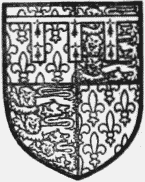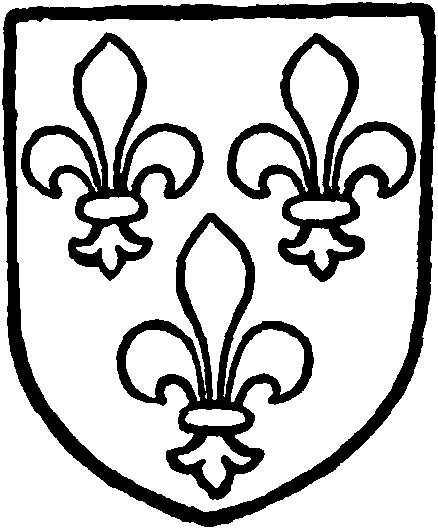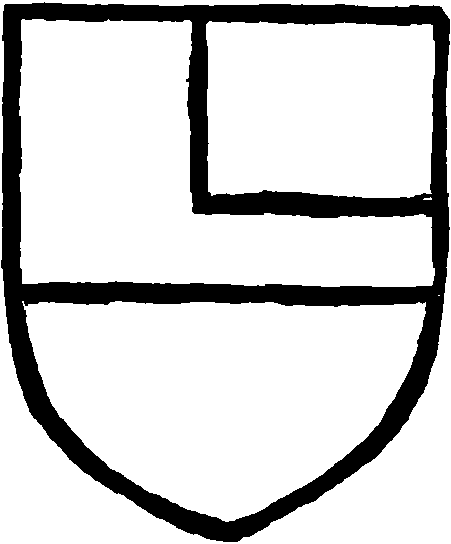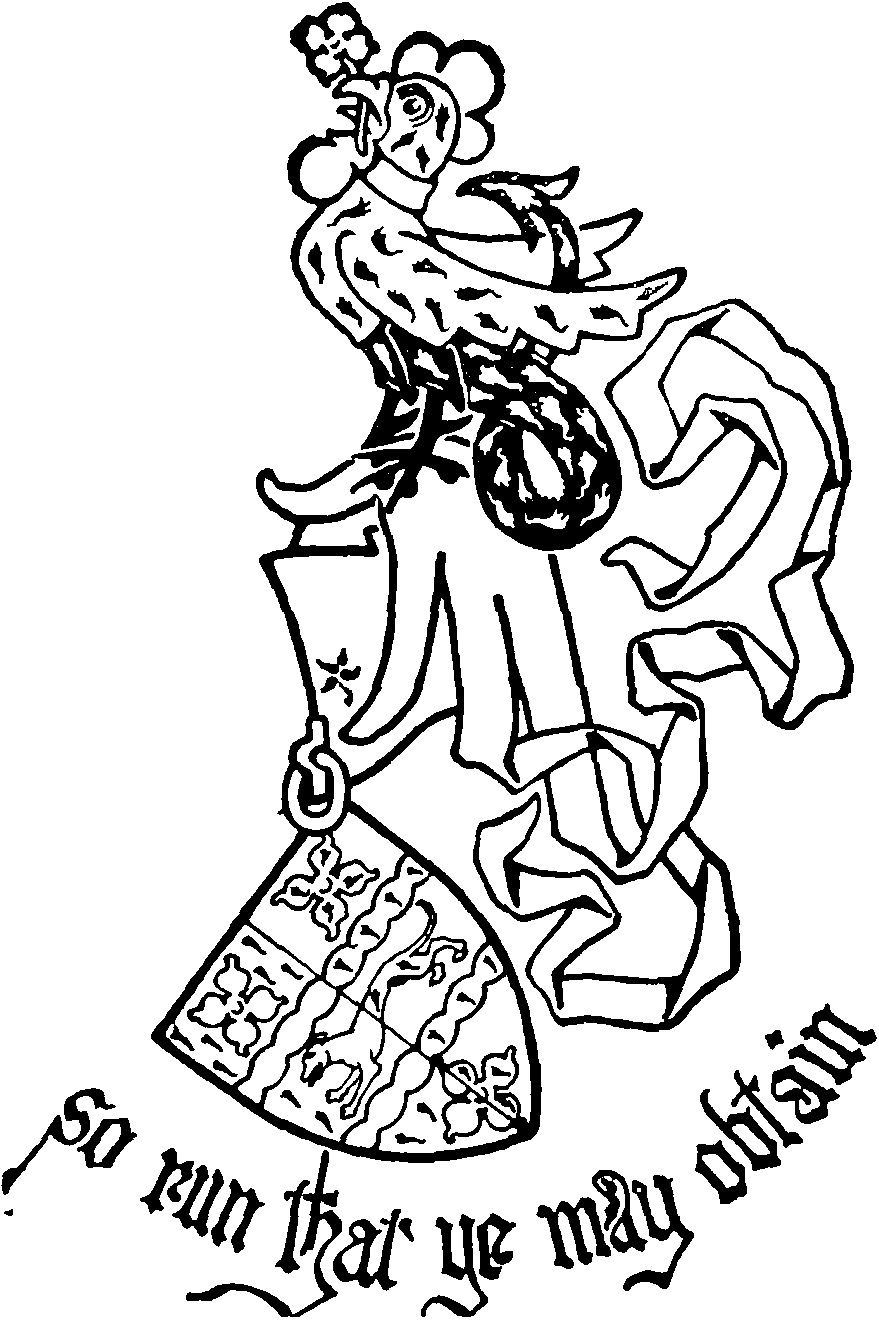A History of the County of Hertford: Volume 3. Originally published by Victoria County History, London, 1912.
This free content was digitised by double rekeying. All rights reserved.
'Parishes: Bayford', in A History of the County of Hertford: Volume 3, ed. William Page (London, 1912), British History Online https://prod.british-history.ac.uk/vch/herts/vol3/pp419-423 [accessed 24 April 2025].
'Parishes: Bayford', in A History of the County of Hertford: Volume 3. Edited by William Page (London, 1912), British History Online, accessed April 24, 2025, https://prod.british-history.ac.uk/vch/herts/vol3/pp419-423.
"Parishes: Bayford". A History of the County of Hertford: Volume 3. Ed. William Page (London, 1912), British History Online. Web. 24 April 2025. https://prod.british-history.ac.uk/vch/herts/vol3/pp419-423.
In this section
BAYFORD
Begesford (xi cent.); Begeford, Beiford (xii cent.); Beyford, Byfordberi (xiii cent.).
The parish of Bayford has an area of 1,852 acres, of which 398 acres are arable land, 1,028 acres permanent grass and 425 acres woods. (fn. 1) The parish in the north, where it extends to the River Lea, stands at about 140 ft. above the ordnance datum; the ground rises gradually in a southerly direction and reaches a height of 402 ft. near Ashendene in the extreme south of the parish. A small stream which rises near Ashen Grove forms part of the eastern boundary of the parish and flows through the grounds of Bayfordbury into the Lea, which forms the northern boundary. Another tributary of the Lea divides Bayford on the west from Little Berkhampstead.
Bayfordbury, the residence of Mr. H. W. C. Baker, the lord of the manor, lies, with its park of 270 acres, in the north-east of the parish. The house is three stories in height with a basement, consisting, as originally designed in 1759, of a square central block with isolated office wings on either side. A view in the possession of the owner shows that the walls were then faced with red brick. In the early 19th century the wings were connected with the main portion of the house by the erection of a large room on the west for the reception of the portraits of the Kit Cat Club, which had been moved here from Barn Elms, and the corresponding library on the east. At the same time the exterior of the whole house was stuccoed. The chimney-pieces and doorcases of the earlier date are excellent examples of the mid-18th-century style. The later additions are well designed in the Greek manner of their period. A number of fine cedars standing near the house were planted in 1765. The celebrated collection of portraits of thirty-nine members of the Kit Cat Club, a political association numbering among its members most of the Whig celebrities of the early part of the 18th century, includes those of Addison, Steele and Pope; they are mostly by Kneller. Sir William Baker married Mary daughter of Jacob Tonson, who was nephew and heir of Jacob Tonson, the secretary of the Kit Cat Club, and the portraits came to his son William Baker in 1772 on the death of Richard Tonson, the last of the Tonsons. (fn. 2)
The village of Bayford lies on high ground on the road leading to Hertingfordbury on the north and Northaw on the south. The village smithy, the school, the vicarage and the Manor House lie close together at the junction of this road with Stocking Lane, which is an old road running north-west and south-east through the parish. Opposite the school is a large pond. Most of the cottages here are of brick and date from the 18th and early 19th centuries. The cottage now used as the post-office appears to date from the first half of the 17th century. It is of brick, two stories in height, with diagonal brick chimney-shafts, and is now weather-boarded. The church stands in an isolated position about a quarter of a mile north-west of the village. South of the village a road branches off westwards to Little Berkhampstead, and still further south another turns east to Broxbourne, passing Ashendene, the residence of the Rev. Charles Edward Hornby, M.A., J. P. Bayford Hall, a short distance north-west of the church, is the residence of Admiral Alexander Plantagenet Hastings, C.B., J.P., and the Misses Randolph reside at Bayford House at the south end of the village. Mr. Leonard Marlborough Powell resides at Bayford Grange and Mrs. Cuninghame at the Warren. The Manor House, near the vicarage, is the seat of Mrs. Barclay. It was originally built in the 17th century, but received many additions and alterations in the 19th century. The original staircase and some 17th-century panelling still remain.
The nearest railway station is Hertingfordbury, about 2 miles north of the village.
The subsoil of the parish in the north is chalk. A belt of Woolwich and Reading Beds runs across the centre and the subsoil in the south is London Clay.
Place-names that occur in Bayford in the 15th century are: Lindhawes (now How Claypits Farm), Westhalegrove, Stroutershacche, Smoggefeld, Walbournes and Crosfeldes. In the middle of the 18th century the following are mentioned: Lobb's Pound, Stockinmead, Boarded Bridge Pastures, Moonfield, Lay Breech, Dendrige Hill, Great and Little Chace, Quaker's Mead, Little Brickhills, Sallinger's Wood, Duricke Lane, Eldenburymore, Weepine Wood, Abbs Close, Haddons Mead, Gidnes, Cramphorne Croft, Stangells, Sluttswell Field, Warborne Spring, Black Fan Wood.
MANOR
The manor of BAYFORD was part of the lands of the Saxon kings, and Edward the Confessor held it in demesne on the day he died. During the reign of Harold Bayford was held by Earl Tosti or Tostig, his brother, but after the Conquest it again formed part of the royal demesne, and in 1086 was held by King William. It was then assessed at 10 hides, (fn. 3) but this assessment probably included Essendon. (fn. 4) William I granted the manor to Peter de Valognes, Sheriff of Hertfordshire, (fn. 5) and it was afterwards granted to his son Roger in 1141 by the Empress Maud to hold to him and his heirs. (fn. 6) After the death of Roger de Valognes, however, Bayford seems to have returned to the Crown, for Henry de Essex paid 76s. 4d. as the farm of Bayford for half a year in 1154–5. (fn. 7) Towards the end of the 12th century the recognized farm of the manors of Bayford and Essendon was £20 annually. Richard the Treasurer (Thesaurarius) returned half this amount in 1177, presumably for half a year, and the whole £20 for some years after. (fn. 8) In 1194 the Bishop of London, Richard Fitz Neal, owed 100 marks for having the two manors, 'as he had previously had them,' for life. (fn. 9) At the death of the bishop in 1199 the payments of £20 were resumed by William the Treasurer, who then paid for a quarter-year. (fn. 10) In 1211 he was succeeded as farmer by John Fitz Hugh, (fn. 11) who gave place to John de Bassingburn in 1214, (fn. 12) and payment was made by Falkes de Breaute from 1218 to 1221. (fn. 13) Richard de Argentein, sheriff of the county, was the farmer in 1226. (fn. 14)
In 1228 the manor of Bayford was committed to Raymond de Burgh, (fn. 15) and in 1230 to John de Burgh. (fn. 16) Raymond paid no farm during the two years he held it, but was pardoned the debt thus incurred in 1230. (fn. 17)
In 1247 the king granted the keepership of the manor to his half-brother William de Valence, and in 1249 granted the manor itself to him for life, with reversion to the Crown. (fn. 18) William forfeited his lands after the battle of Lewes in 1264, but was restored in 1266, after the defeat of the barons at Evesham, (fn. 19) and held Bayford until his death in June 1296, (fn. 20) after which in 1297 the issues of the manor were granted to Philip de Wiloughby, Dean of Lincoln, for the remainder of that year and the whole of the next. (fn. 21) A little later Edward I granted the manor for life to his second queen, Margaret of France, (fn. 22) whom he married in 1299; she held it until her death in 1318, (fn. 23) after which it was held for life by Isabella, queen of Edward II, (fn. 24) who survived her husband for some years. In 1360 Bayford was granted by Edward III to John of Gaunt, then Earl of Richmond, (fn. 25) and his heirs male, and it was confirmed to him in 1376 under his new title of King of Castile and Leon and Duke of Lancaster. (fn. 26) William de Louthe was appointed steward there in 1359, (fn. 27) and remained in office until 1361, (fn. 28) when the Abbot of St. Albans received a grant of the manor at farm. John of Gaunt died early in 1399, and his son Henry became king in the same year as Henry IV; thus Bayford returned once more to the Crown, and was granted for life to Henry's second queen, Joan of Navarre. (fn. 29) Henry VI, upon his accession in 1422, granted the manor in dower to his mother Katherine of France, (fn. 30) queen of Henry V, and his successor Edward IV gave it to his queen Elizabeth Woodville for her life. (fn. 31)

John of Gaunt, Duke of Lancaster. OLD FRANCE quartering ENGLAND with the difference of a label ermine.

Katherine of France. Azure three fleurs de lis or.

Elizabeth Wood-ville. Argent a fesse and a quarter gules.
In 1489 Henry VII leased the manor-house of Bayford and the demesne lands to Robert Markham for seven years, (fn. 32) at the end of which term he received the lease for another seven years, (fn. 33) and in 1504 a further term of twenty years was granted to Robert's widow, Agnes Markham. (fn. 34)
In 1544 Henry VIII granted to John Knighton 'all the manor of Bayford, with members and appurtenances, to be held of the king and his successors as of the duchy of Lancaster by the service of onefortieth of a knight's fee.' (fn. 35) John Knighton died in 1586, leaving the manor of Bayford or Bayfordbury to his eldest son George, (fn. 36) who died in 1612, leaving a son John and a daughter Anne. (fn. 37) John Knighton held the manor until his death in 1635, when it passed to his nephew Knighton Ferrers, son of his sister Anne and Sir John Ferrers. (fn. 38) Knighton Ferrers mortgaged Bayford to Edmund Knight in 1638 for £2,000, and died in 1640, leaving the debt to his wife Katherine, who was to pay it off and hold the manor for her life, after which it was to pass to their daughter Katherine. (fn. 39) Katherine the younger, when twelve years old, married Thomas Fanshawe, afterwards Viscount Fanshawe (fn. 40) of Dromore, and was holding Bayford in 1651, (fn. 41) but in 1655 they conveyed it to John Mayo, (fn. 42) who was succeeded by his son Israel Mayo in 1675. (fn. 43) Israel Mayo, who died in 1715, sold the manor in 1713 (fn. 44) to Charles Kent and Joseph Wright, (fn. 45) trustees for Henry Long, whose daughter and heiress Jane was lady of the manor in 1728. (fn. 46) Jane married Charles Adelmare or Caesar the younger (fn. 47) of Bennington, and had two daughters—Jane, who married Charles Cottrell in 1755, (fn. 48) and Harriet, who later married Robert Chester. (fn. 49) After the death of Charles Caesar in 1740 (his wife had died in 1737) (fn. 50) Bayford was divided between Jane Cottrell and Harriet, (fn. 51) who joined in conveying their moieties of the manor to Sir William Baker in 1758. (fn. 52) Sir William was succeeded in 1770 by his son William Baker, M.P. for Hertfordshire, (fn. 53) who died in 1824 (fn. 54) and whose grandson and successor William Robert held the manor and died in 1896. William Clinton Baker, son of the latter, inherited Bayford and died in 1903, and his son Mr. Henry William Clinton Baker is the present lord of the manor. (fn. 55)

Baker of Bayfordbury. Party ermine and gules a running greyhound between two bars invected and three quatrefoils all countercoloured.
The liberties of sac, thol, theam and infangentheof were granted to Roger de Valognes with his lands by the Empress Maud (fn. 56) in 1141. When the manor was in the king's hand view of frankpledge and other courts were held together with Essendon. (fn. 57) Court leet, view of frankpledge, amendment of the assize of bread and ale and free warren were included in the grant of Bayford Manor to John Knighton in 1544 (fn. 58)
In 1278 it was stated that the men of Bayford had been accustomed to fish in their waters with 'boterell' and other small engines until William de Valence had hindered them some twenty years before. The right of such fishery was then restored to them. (fn. 59) Free fishery is mentioned as parcel of the manor in the various conveyances.
Of the two mills mentioned in 1086 one seems to have been in Bayford. The tithes of it were granted in 1226 to Richard de Argentein. (fn. 60)
The park of 270 acres which surrounds the manorhouse of Bayfordbury was inclosed by Sir William Baker between 1758 and 1762, at about the same date that he built the house (see above). (fn. 61)
In 1316 another manor of BAYFORD, now represented by the estate of Bayford Hall, and then described as two messuages, 150 acres of land with appurtenances, was conveyed by Richard le Rous and his wife Mabel to Henry le Scrope. (fn. 62) In 1330 it is mentioned that a messuage and carucate of land in Bayford were held of the king by Henry le Scrope by a yearly farm of 8s. 11½d. and 30 other acres by certain day works of ploughing, reaping, weeding, mowing meadows and carrying hay or payment of 11s. 3¼d. In that year, however, the king remitted all these services and substituted a yearly rent of 1d., payable at Christmas. (fn. 63) Henry le Scrope died in 1336, leaving a son William, (fn. 64) who died without issue in 1344. (fn. 65) In 1346 Cecily, widow of William le Scrope and re-married to John Clopton, received in dower the Bayford lands with reversion to Richard le Scrope of Bolton, brother and heir of William and at that time a minor in the custody of Queen Philippa. (fn. 66) Sir Richard le Scrope conveyed his manor of Bayford to John Staunton apparently towards the end of the 14th century. (fn. 67) He granted it to Peter de St. Paul, an alien and serjeant-at-arms to Queen Isabella (who became the second queen of Richard II in 1395). Peter de St. Paul was never naturalized, and his lands in England were thus legally forfeited to the Crown. He, however, granted the manor to William de Neweton, who conveyed it to John and Milicent Pomye and William Chelmsford, seemingly for the purpose of settling it on himself and his wife Maud, to whom his feoffees regranted it. Afterwards he conveyed it to John Brampton, vicar of All Saints, Hertford, Richard Wyndesore and Richard Sampson, who in turn granted it to Roger Bokenham and Maud. Roger conveyed the property to William Fromond, chaplain, and John Ecleshale, who enfeoffed John Chambre, citizen and fishmonger of London, and Catherine his wife. John died and Catherine married, secondly, Robert Wydyton, citizen and grocer of London, who sold the estate to John Wodehous and John Dalton. All these proceedings had taken place without royal licence. Wodehous and Dalton obtained a pardon in 1415, but were dispossessed apparently in 1417 because of the alleged forfeiture of Peter de St. Paul for not having been naturalized. Henry V then granted the custody of 'le Halle' to John Sauton, but upon the appeal of Wodehous and Dalton it was restored to them in 1426. (fn. 68) In 1439 John Tewkesbury, goldsmith of London, held the 'manor of Bayford called Halle Place' in right of his wife Agnes and in that year conveyed it to Alexander Orable and others. (fn. 69) Orable seems to have sold the manor to Sir John Fortescue (who bought the manors of Gacelyns and Ponsbourne in 1448), for later it was (with Ponsbourne) in the possession of John Fortescue, who died seised in 1517, leaving a son Henry. (fn. 70) It seems to have passed with Ponsbourne to Sir Thomas Seymour, and in spite of a suit brought by Henry Fortescue, who claimed it as a separate manor from Ponsbourne, (fn. 71) to have descended with that manor until the death of Sir John Ferrers in 1640. It was apparently settled on a younger son Charles, whose son Charles Ferrers in 1678 sold 'the messuage or farm called Bayford Hall' to Israel Mayo, lord of Bayfordbury, (fn. 72) with which it has since descended.
A third manor or capital messuage of BAYFORD (held of the principal manor) appears at the beginning of the 16th century in the possession of the Knighton family. Thomas Knighton settled it in 1529 on his heirs by his second wife Joan Colloppe with reversion to his younger son John, to whom it actually passed at the death of Thomas in 1545. (fn. 73) This John had received a grant of Bayfordbury in 1544, and the two manors then descended together.
The manor of Gacelyns in Hatfield extended into Bayford and was partly held of the manor of Bayford. (fn. 74)
CHURCH
The church of ST. MARY stands about a quarter of a mile north of the village and consists of chancel, with octagonal eastern end, 40 ft. by 18 ft., south chapel 18 ft. by 10 ft., nave 51 ft. by 21 ft., north vestries and south porch; all internal dimensions. The church was built in 1870 close to the site of the old church, which has disappeared, but some of its fittings are preserved in the present church.
In a recess on the north side of the chancel is a white marble monument of George Knighton, who died in 1612. On the tomb is the recumbent effigy of a knight in armour; underneath are two panels, one containing an inscription, the other contains arms. At the back of the recess three brasses have been fixed; one, with a figure of a knight in armour, is supposed to represent Thomas Knighton, who died in 1545; it is a palimpsest and on the back are parts of a shrouded figure; the second has also a figure of a knight in armour, without inscription, but possibly representing John Knighton, who died in 1586; the third is a shield of arms: barry of eight, on a canton a tun, for Knighton, impaling quarterly (1) and (4) on a pale a conger's head, for Gascoigne, (2) and (3) three picks, for Pickett or Pigott. Hanging on a bracket close by is part of the brass of a lady, said to be the wife of Thomas Knighton above mentioned; this brass and the shield are also palimpsests, and have both been cut from a Flemish brass of an ecclesiastic.
The octagonal font is of late 15th-century date; the panelled sides of the bowl are ornamented with Tudor roses, the base is moulded.
The two bells are modern.
The communion plate consists of chalice, 1869, paten, 1871, and flagon, 1869.
The registers before 1812 are as follows: (i) all entries 1538 to 1713; (ii) baptisms and burials 1713 to 1775, marriages 1713 to 1754; (iii) baptisms and burials 1775 to 1812; (iv) marriages 1755 to 1812.
ADVOWSON
Bayford Church, which is mentioned as early as 1222, (fn. 75) was a chapelry pertaining to the rectory of Essendon (fn. 76) until 1867, and the advowson therefore followed that of Essendon (fn. 77) (q.v.). In 1867 it was made a vicarage in the presentation of the lord of the manor, and was endowed out of the Common Fund. (fn. 78)
In 1366 the people of Bayford appealed for right of sepulture at their own chapel, owing to the inconvenience of having to go to Essendon. They stated that the distance between their chapel and Essendon Church was about 3 miles and that the vill of Little Berkhampstead lay between them. The bodies had to be carried past a water-mill on a stream of which one bank was in the demesne of Berkhampstead and the other in Essendon, wherefore 'the carts going with bodies are often brought to grief in the river, and the people attending annoyed with attachments in passing through Berkhampstead.' (fn. 79)
In 1503 the church had an image of St. Nicholas, for the mending of which Robert Markham left 6s. 8d. (fn. 80)
CHARITIES
In 1607 Sir George Knighton, kt., by will gave 10s. yearly towards the reparation of the chapel in Bayford Church and 10s. yearly for the poor. The annuities were redeemed in 1863 by the transfer to the official trustees of £33 6s. 8d. consols, who also hold a further sum of £30 16s. 3d. consols, arising from accumulations of income. The dividends on the stock, amounting to £1 12s. yearly, are distributed to the poor periodically. (fn. 81)
In 1840 Edward Jones, by his will, bequeathed a legacy, now £459 3s. 8d. consols, the annual dividends, amounting to £11 9s. 4d., to be applied in keeping in repair the family vault, and the residue to be distributed triennially among male labourers, being housekeepers and over twenty-five years of age, not having received parish relief. In 1907 a sum of £29 8s. was divided among twelve labourers.
In 1853 William Yarrell, by will, bequeathed £500 consols, the annual dividends, amounting to £12 10s., to be applied, subject to the repair of the family vault, for the benefit of the poor. In 1908 twenty-two persons received sums of 7s. 6d. or 10s. each.
The sums of stock are held by the official trustees.
The Baker Foundation, under the will of Miss Charlotte Amelia Baker, proved 8 February 1836, consists of £431 8s. 9d. Leicester Corporation 3 per cent. stock, held by the official trustees, producing £12 18s. 10d. yearly. By a scheme of the Board of Education 13 December 1904 the income, wholly or in part, is made applicable for the benefit of any public elementary school in the parish, and the residue (if any) in maintenance of exhibitions at a secondary school or institution of technical or industrial instruction.